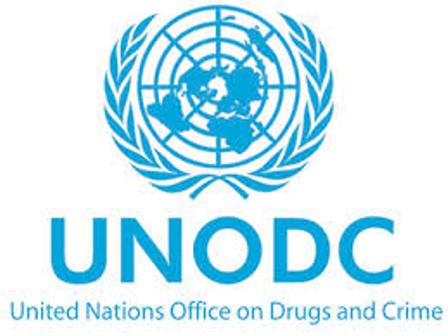
UNODC Executive Director,
ABUJA – Some 464,000 people across the world were killed in homicides in 2017, surpassing by far the 89,000 killed in armed conflicts in the same period, according to the Global Study on Homicide 2019 published recently by the United Nations Office on Drugs and Crime (UNODC).
“The Global Study on Homicide seeks to shed light on gender-related killings, lethal gang violence and other challenges, to support prevention and interventions to bring down homicide rates,” said UNODC Executive Director Yury Fedotov.
“Countries have committed to targets under the Sustainable Development Goals to reduce all forms of violence and related death rates by 2030. This report offers important examples of effective community-based interventions that have helped to bring about improvements in areas afflicted by violence, gangs and organized crime.”
The study shows that the overall number of people who suffered a violent death as a result of homicide increased in the past quarter of a century, from 395,542 in 1992 to 464,000 in 2017. However, because the global population has risen faster than the increase in recorded homicide victims, the overall risk of being killed in homicides has declined steadily. The global homicide rate, measured as the victims of homicide per 100,000 people, declined from 7.2 in 1992, to 6.1 in 2017.
Organized crime alone was responsible for up to 19 per cent of all homicides in 2017. Since the start of the twenty-first century, organized crime killed about as many people as all armed conflicts across the world combined. Moreover, just like armed conflicts, organized crime destabilizes countries, undermines socioeconomic development and erodes the rule of law.
The 2017 average global homicide rate (6.1) masks dramatic differences across regions. With 13 victims of homicide per 100.000 inhabitants, Africa’s homicide rate is well above the global average and second only to the rate of 17.2 in the Americas,. whereas the rates in Asia, Europe and Oceania were below the global average (2.3, 3.0 and 2.8 respectively).
Data on homicides, in particular, in Africa is patchy and diverging. In Nigeria official statistics are hard to come by. In 2004 the World Health Organization reported the homicide rate in Nigeria at 5.4 per 100.000 inhabitants.
Data provided by the Nigeria Police Force indicate that there were 2,712 and 2,861 homicides in 2012 and 2013, respectively. However, according to the Federal Ministry of Justice, these data are incomplete since not all States appear to maintain statistics or report on them on a regular and reliable basis.
A report published recently by the National Bureau of Statistics put the number of “murders” in 2017 at 3,219. An alternative source is provided by the World Health Organization (WHO) who estimated in 2014 17,059 victims of homicide. In 2017, the National Bureau of Statistics published prison statistics indicating that from 2013 to 2016 an average of 8,264 per year, were imprisoned for allegedly committing homicide.
To find out more about homicides in Nigeria, UNODC, in partnership with the National Bureau of Statistics of Nigeria, in 2016 conducted a survey covering more than 33,000 households across all 36 States and the Federal Capital Territory of Nigeria.
The results of the survey provide strong evidence that the level of lethal violence in Nigeria could be significantly higher than reported to the authorities or estimated based on public health data. On the basis of the survey sample, the annual homicide rate of Nigeria in the period 2013–2016 was estimated at 34 per 100,000 population, corresponding to around 64,000 victims of intentional homicide annually with significant variations across the six geopolitical zones.
The total homicide rate was estimated to be the highest in the North-East: 79 per 100,000 population and North-Central: 65 per 100.000. With an estimated 4.4 victims of homicide per 100.000 inhabitants, the homicide rate was the lowest in the South-West.
Globally, some 81 per cent of homicide victims recorded in 2017 were men and boys, and more than 90 per cent of suspects in homicide cases were men, according to the most recent estimates. However, the study shows that the gender disparity among victims changes with age.
Girls and boys aged nine and under are killed at roughly equal rates, in marked contrast to all other age groups, in which males make up more than 50 per cent of the victims, according to data from 41 countries.
In all regions, the likelihood of boys becoming victims of homicide increases with age, although this process occurs at different stages. Men and male adolescents aged between 15 and 29 are at the highest risk of homicide globally. At the same time, nowhere are women and girls more likely to become victims of homicide than in Africa, predominantly at the hands of an intimate partner or a family member.
Targeted and efficient interventions to counter homicide require a comprehensive understanding of its scale and drivers. The drivers of homicide highlighted in the study include inequality, unemployment, political instability, the prevalence of gender stereotypes in society, and the presence of organized crime.
The study also points to the importance of a governance model centred on the rule of law, control of corruption, and investment in socioeconomic development, including in education, as critical in bringing down the rate of violent crime. Firearms and drugs and alcohol are further facilitators of homicide that need to be addressed, according to the study.

